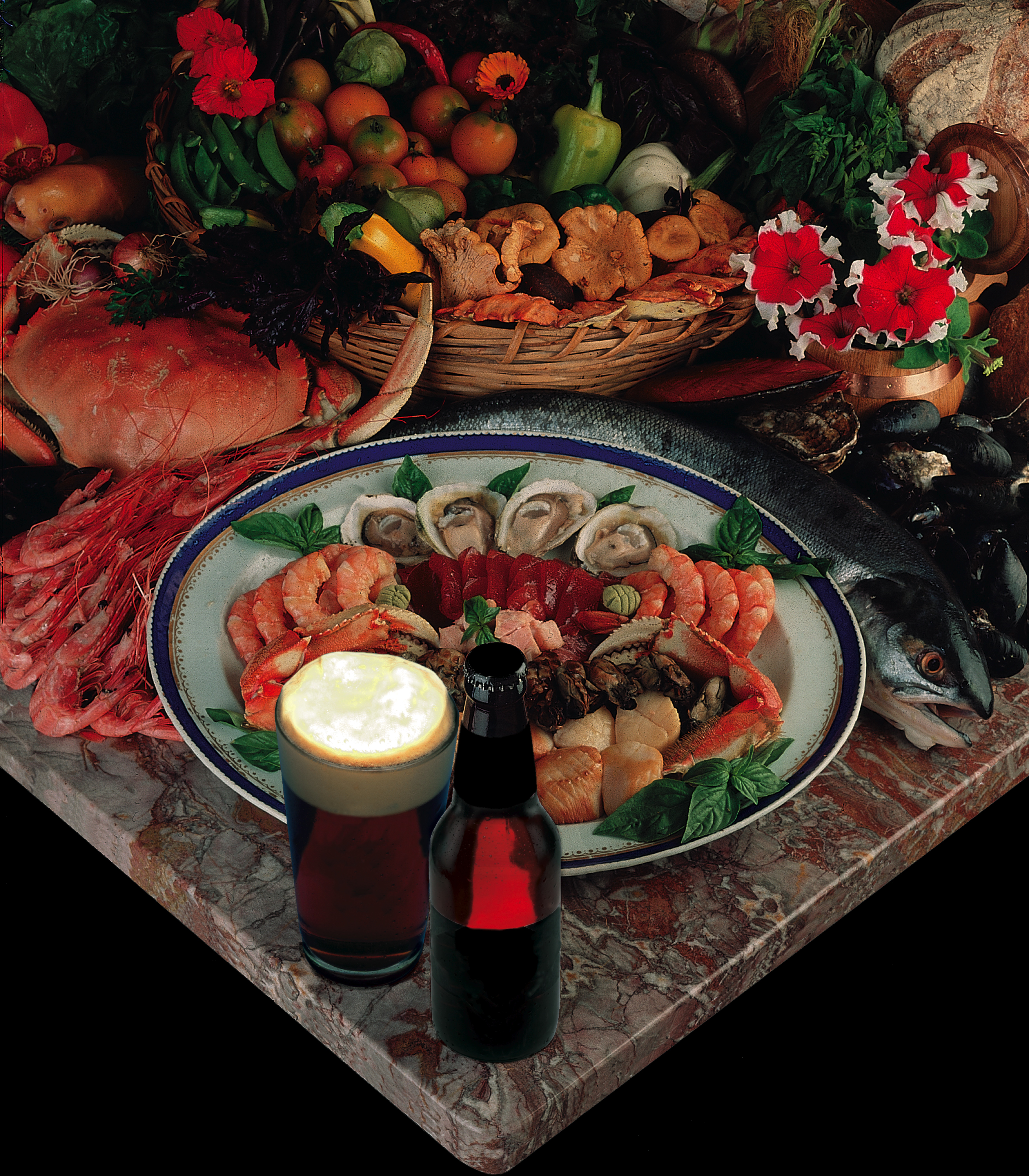Instruction for pairing food with beer is a little like scripting sex. In both, “common senses” should prevail. Each is a lot of fun with little direction, yet The Joy of Sex and the Playboy Advisor vie in readership with the Koran, Torah and New Testament. Similarly, books about the appetizing subject of food and beer, like Michael Jackson’s Ultimate Beer and Garrett Oliver’s Brewmaster’s Table, are delicious reads that add pleasure to something we already enjoy.
The balance of aroma, bouquet, acidity, sweetness, texture, mouthfeel, effervescence, temperature, color, flavor, strength and even origin are the keys to unlocking the beer and food mystery.

(Phoenix Imports and Merchant du Vin)
Writing about beer and food is nothing new. Chronicling life in ancient Egypt, the Greek historian Herodotus wrote in the fifth century BC, “They eat loaves of bread of coarse grain which they call cyllestis. They make their beverage from barley, for they have no vines in their country. They eat fish raw, sun dried or preserved in salt brine.” And, when the European crusaders invaded Jerusalem to spread the gospel, they found tables spread with pineapples, figs, citrus, coconuts, lentils and sugar. Mustard, saffron, cloves, cinnamon, lavender and rosemary—all unknown in the West—spiced the diet and sparked the imagination. What to drink? Beer, of course, and in myriad styles!
Modern Beer Missionaries
Beer and spices were introduced to the West through the European monasteries by the crusaders returning from the holy land. About 700 years later, with two dozen salespeople, I led a pilgrimage to the holy land of beer—Belgium, where more styles of beer are brewed than perhaps in any other nation. Our first stop was Orval abbey and its brewery, an example of cleanliness next to godliness.
My beer missionaries joined our Trappist brothers for heavenly hash—organic vegetable soup, freshly baked multigrain bread, spit-roasted rabbit, abbey cheese, and a special bottling of Orval Trappist Ale diluted 50 percent with their famous Mathilda spring water: all grown, made, foraged or hunted locally.
Doing most of the talking, we supped with men of few words at ancient tables, hand-hewn from trees felled in the local woods. The half-strength Orval is reserved for them. It is a simple beer, dry and refreshing. At home, we relish the intensely hoppy, yeast-laden Orval as an aperitif with salted almonds and olives.
The dinner was a metaphor for the work of the monastery—harmony and balance. We learned that revenues from the brewery are used to feed the hungry.
That a beverage brewed from only malt, hops, yeast, water, and occasionally sugar and spices, can be so complex and satisfying is a miracle no less exciting than converting water to wine. No wonder the arcane ale alchemy practiced in this diminutive nation in the center of Europe evolved from Orval and other monasteries.









